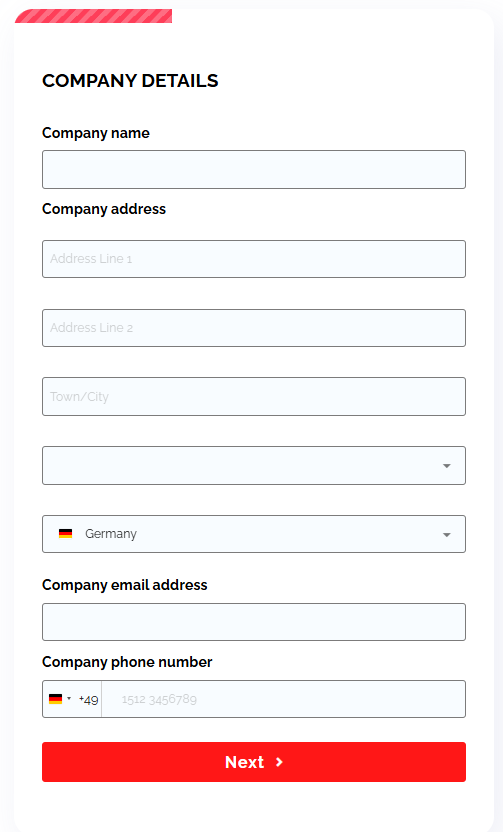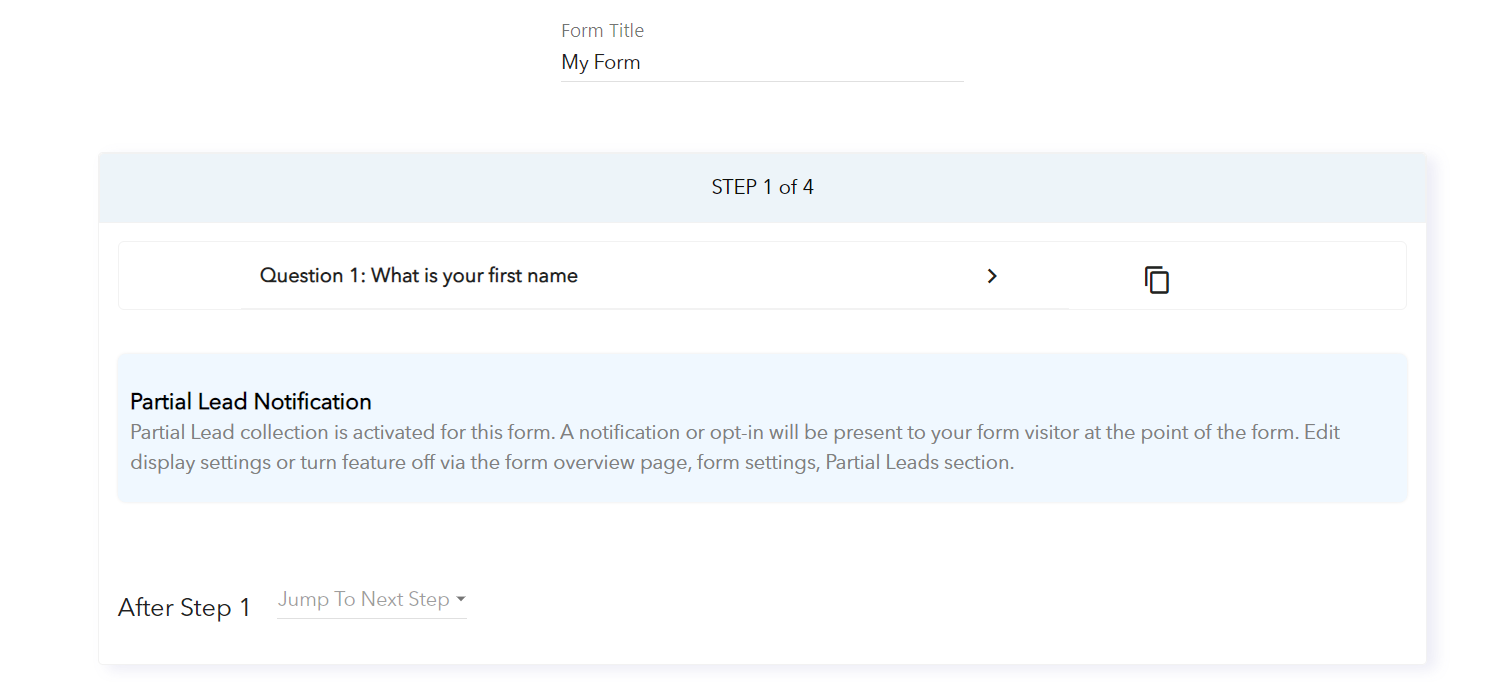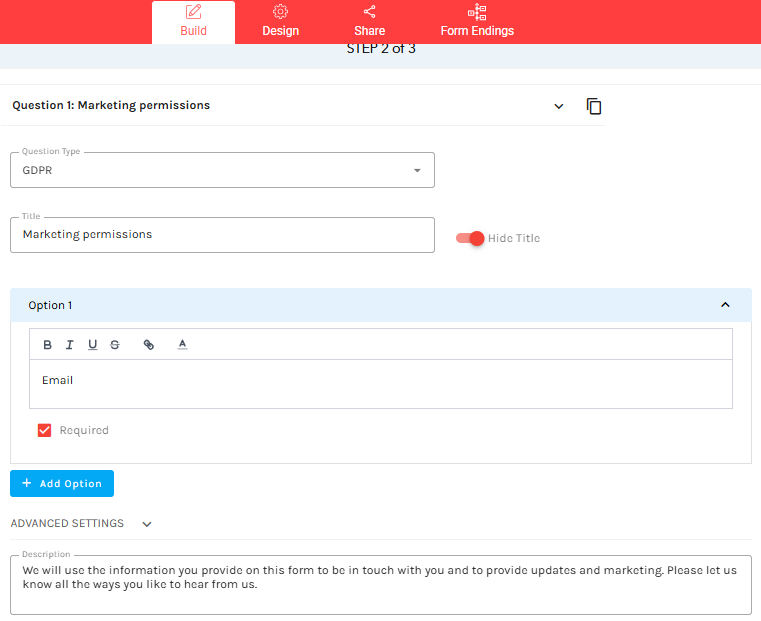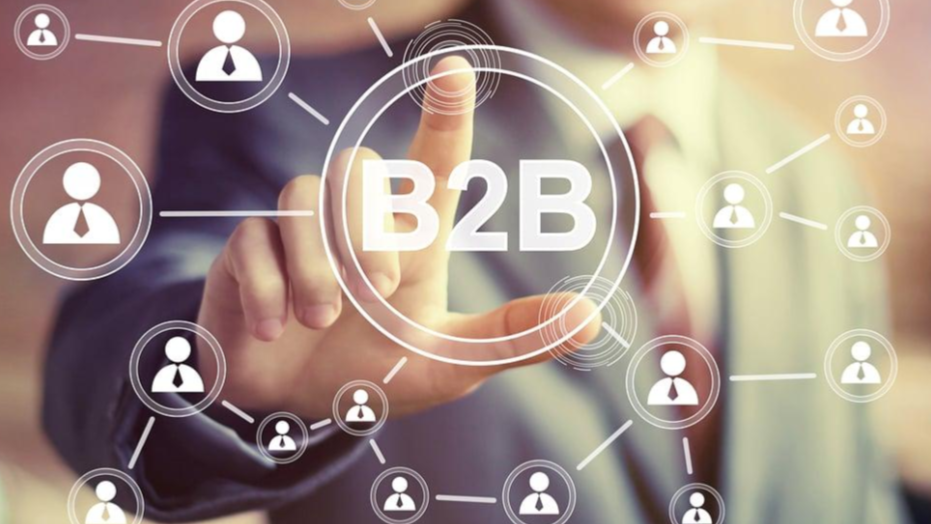Boost Lead Engagement with Zero-Party Data Strategies
There was a time when marketers played detective. They'd piece together user data from tracking cookies and third-party sources. It all worked until people started noticing those oddly specific ads following them across the internet.
As privacy concerns grew, GDPR and CCPA laws restricted non-consensual tracking. These forced brands to resort to first-party data collected directly from the customers on their platforms.
But, even that seemed inadequate. It was still based on behavior tracking rather than explicit customer input. That’s how zero-party data became the new oil in the data world.
In this blog, we’ll take a deep dive into zero-party data—what it is, why it matters, and how it can transform your lead management strategy. We’ll also explore real-world examples and use cases to showcase its impact. This should make it easy to understand and apply to your business.
Understanding zero-party data
First, let’s examine how brands have been collecting customer information over the years. To picture this shift, imagine a four-tiered pyramid:
To picture this shift, imagine a four-tiered pyramid:
- Third-party data (bottom layer): Collected without direct user input. (Think tracking cookies and data brokers).
- Second-party data (above third-party): Collected by a trusted partner. This could be a market research firm or a retail collaborator. It would be shared with a business for deeper insights.
- First-party data (above second-party): Gathered from user interactions. These can include site visits or purchases.
- Zero-party data (top layer): Shared directly by users through forms, surveys, and preference settings.
Now let’s take a closer look at these different data types and understand how they evolved:
- Third-party data: This was the wild west of data collection. Brands gathered information from tracking cookies, data brokers, and other external sources without direct user input. It fueled targeted advertising. But later faced a major crackdown due to privacy regulations.
- Second-party data: This is data shared between trusted partners, such as a travel booking site sharing user preferences with a hotel chain. It’s more accurate than third-party data. But, it’s still not collected directly from the customer.
- First-party data: Brands collect data from website visits, app interactions, email sign-ups, and purchase history. While this data collection method represented a significant improvement, it still relied heavily on assumptions based on behavioral patterns.
- Zero-party data: Zero-party data (ZPD or 0P Data) is a term coined by Forrester Research to describe information that customers willingly provide to brands. This includes details like their likes, dislikes, and future shopping plans. It comes directly from the customer. This means it’s a goldmine for businesses looking to create highly personalized experiences.
The role of zero-party data in building consumer trust
A survey by Boston Consulting Group found that four-fifths of consumers love it when businesses offer personalized experiences. One of the main reasons was that they could find the right price offer for them. Around 31% of participants also stated that personalization makes the buying process more enjoyable and convenient.
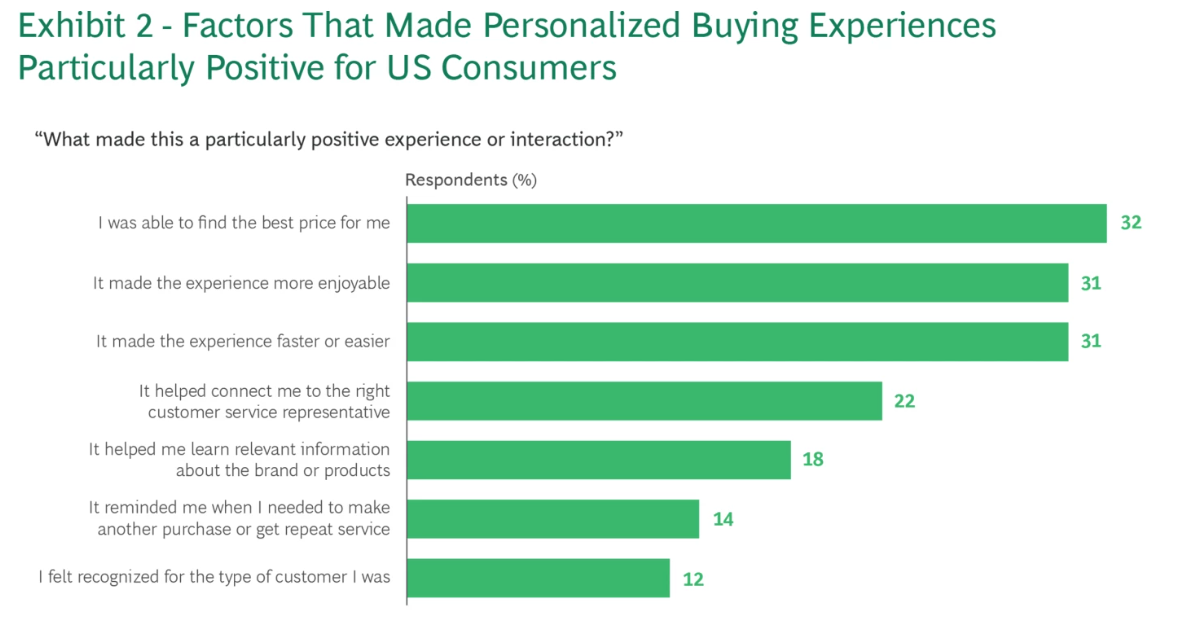
The above graph illustrates the results gathered during the survey. It shows why people consider a personalized buying experience positive. In fact, Salesforce reports that 52% of consumers are less likely to make repeated purchase if they receive a poor quality service from a retailer.
Picture this:
You walk into your favorite café. Instead of the barista guessing your order, they ask, “What’s your go-to coffee?” You say, “A frappé coffee with less sugar.” And, the next time you visit, they remember your choice. That is zero-party data—customers willingly sharing their preferences to improve their experience.
(The Future of Marketing report by eConsultancy reports that 55% of marketers expect zero-party data to become more crucial in the coming years. When done right, zero-party data allows brands to build trust, deliver tailored experiences, and drive loyalty. All without compromising privacy).
First-party data is based on observed behavior. However, as you can see, zero-party data is shared by customers. This makes it a cornerstone of responsible information governance and privacy-forward marketing.
The benefits of zero-party data in lead generation
Nobody likes brands that track behind the scenes or make wild guesses. Zero-party data changes all that by making lead generation natural and respectful. Customers willingly share their interests. In return, they receive relevant and meaningful experiences.
No creepy ads, just genuine connections that drive engagement and sales. This transparency fosters trust, strengthens relationships, and turns casual interactions into loyal customers.
Below are some key benefits of zero-party data in driving lead generation:
1. Builds trust and strengthens relationships
People don’t like being spied on. Consumers today are more aware of how companies are using their data . Zero-party data is data that someone shares because they want to. What does this mean? It fosters trust between brands and customers while ensuring compliance with privacy regulations.
When brands respect user choices and use data responsibly, customers feel in control. This leads to stronger relationships and long-term engagement.
2. Enhances personalization without being creepy
We’ve all seen an ad for something we just thought about, and it feels unsettling. That happens with third-party tracking. Instead, zero-party data puts customers in control. It allows them to share their preferences directly. That way, businesses can personalize offers in a way that feels natural and not intrusive.
3. Reduced dependence on third-party data
With third-party cookies being phased out, businesses need a sustainable way to gather insights without invasive tracking. Zero-party data offers a privacy-first solution. It allows customers to share their preferences directly. This ensures that brands can continue to personalize experiences while staying compliant with evolving privacy regulations.
4. Boosts engagement and conversion
When marketing tactics feels like a conversation rather than a sales pitch, people pay attention. Zero-party data allows businesses to give customers exactly what they want. Like a product recommendation, an exclusive deal, or content tailored to their interests. This personal touch increases engagement, keeps potential leads interested, and drives higher conversions. When customers see value in what you’re offering, they are far more likely to take action.
5. Maximizing marketing efficiency
Zero-party data helps businesses focus on the right audience. No more wasting resources on broad, guesswork-based campaigns. Brands can tailor marketing efforts to actual customer preferences.
This improves efficiency and reduces ad spend waste. It helps your messaging resonate with those most likely to convert.
Strategies for collecting zero-party data
Here are some strategies you can use to collect zero-party data.
1. Interactive quizzes and surveys
Who doesn’t love a fun quiz? Whether it’s “What’s Your Ideal Skincare Routine?” or “Find Your Dream Vacation,” interactive quizzes make sharing preferences an exciting experience. Customers get personalized results, and brands get valuable insights. A total win-win!
2. Preference centers and customizable forms
Instead of flooding inboxes with random emails, let customers pick what they actually want. A preference center enables users to:
- Select topics
- Set their preferred email frequency
- And choose content types
Quick forms on websites or apps also help users share their interests without feeling overwhelmed.
For example, look at how Spotify lets customers set their preferences.
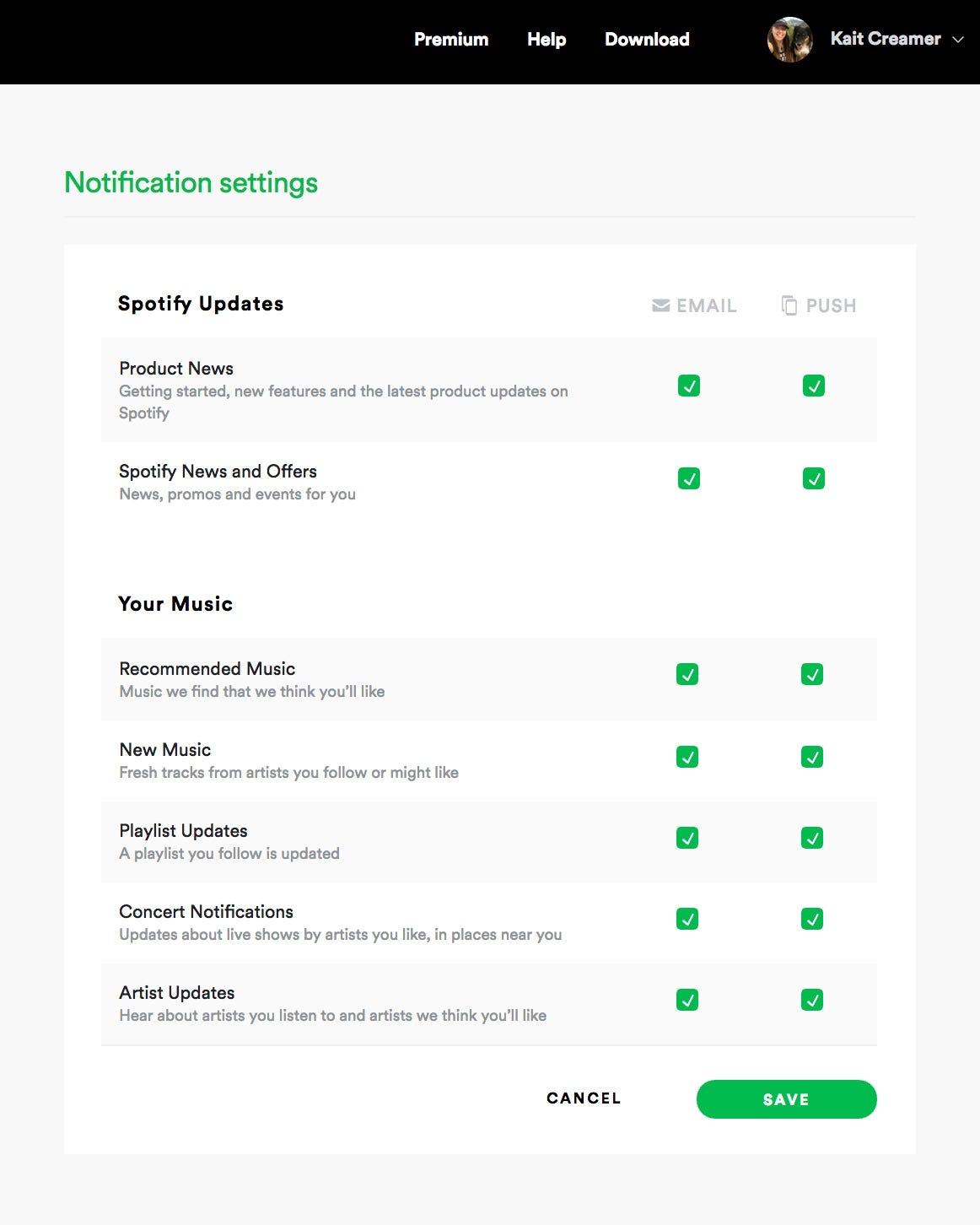
3. Gamification techniques
Make data collection fun with spin-to-win wheels, reward programs, and interactive challenges. When people get a chance to win discounts, loyalty points, or exclusive perks, they’re way more likely to share their preferences. Plus, it keeps them coming back for more!
For example, if you own a beauty brand, you could offer reward programs. You could ask customers to share their preferences through different approaches. These include signing up, sharing birthday details, or following you on Instagram. This is a great way for your brand to send tailored product recommendations.
4. Contests and giveaways
Everyone is up for freebies! Run a contest where users enter by sharing their interests, like their favorite product categories or styles.
A skincare brand could ask participants about their skin type and concerns. Then, it can provide personalized recommendations later.
5. Exclusive content access
Give people something valuable in return for their insights. Offer ebooks, webinars, or industry reports in exchange for a few preferences. If someone downloads a guide on digital marketing, you can send them more helpful tips. This approach ensures they get content they care about.
6. Personalized onboarding
First impressions matter. Ask new users about their goals or interests right from the start. A fitness app might ask whether a user wants to focus on weight loss, muscle gain, or endurance training. This way, businesses can deliver targeted content, product suggestions, or service recommendations. This enhances engagement and retention.
7. Strategic pop-ups for direct engagement
Not all pop-ups are annoying. When done right, they can be super useful. Offer a discount, early access to a sale, or personalized recommendations. You can do this in exchange for preferences. An ecommerce site could use an exit-intent pop-up to ask about shopping interests before a customer leaves. This makes future offers more relevant.
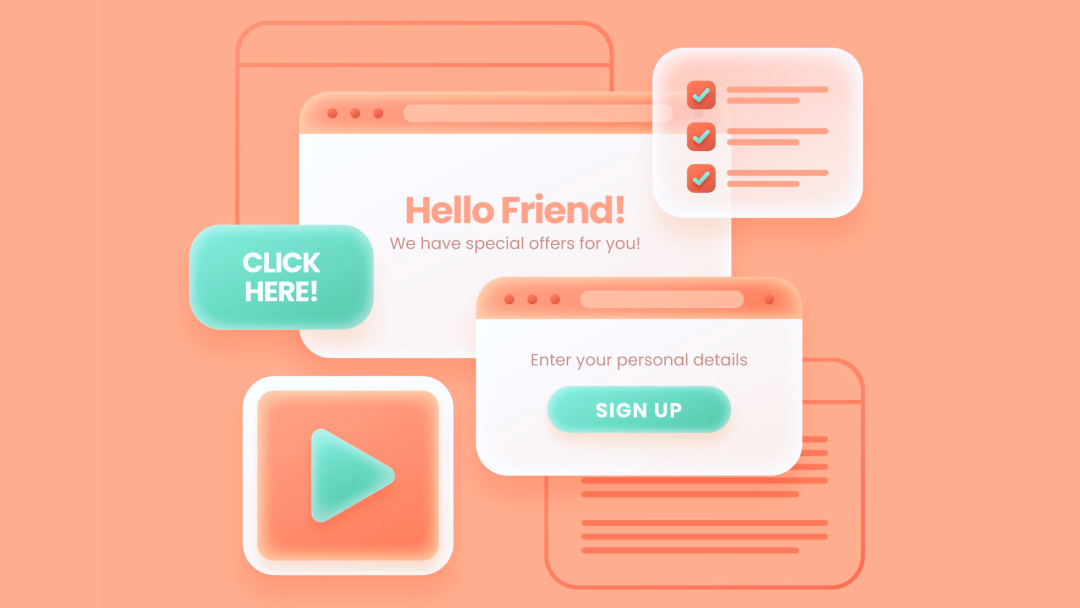
Screenshot provided by the author
Implementing zero-party data with LeadGen App
Zero-party data is the holy grail of lead generation. It’s voluntarily shared, highly accurate, and privacy-compliant.
Unlike third-party or even first-party data, zero-party data is intentionally provided by users, making it invaluable for personalization and customer engagement. LeadGen App makes the data collection process seamless. It offers intuitive forms that encourage direct user input without compromising the experience.
Features supporting zero-party data collection
The LeadGen App provides several features that help businesses gather zero-party data effectively:
Multi-step forms and conditional logic
Multi-step forms with conditional logic create a seamless and personalized user experience. They guide individuals through a step-by-step process while displaying only relevant questions.
You don’t have to overwhelm users with a long list of fields. These forms adapt dynamically based on previous responses. Let’s say a user selects "Small Business" as their company size. They will only see questions relevant to small businesses.
Progressive profiling and partial lead capture
Gather data through different interactions, instead of using long forms.
Capture essential details in initial touchpoints like names and emails. Then collect deeper insights through surveys, quizzes, or follow-ups. Even if users don’t complete a form, the form saves partial responses. This allows businesses to follow up strategically and refine personalization over time.
GDPR question type and compliance features
Privacy-conscious users feel safer sharing information when clear consent options are available. The LeadGen App features a GDPR-compliant question. It enables companies to collect user information and personalize their marketing efforts. This ensures full compliance while increasing trust.
Customizable form elements and engagement features
Adding images, icons, and progress indicators makes the data collection process more interactive and visually engaging, increasing form completion rates.
Integration with CRM and marketing tools
LeadGen App supports seamless integration with other platforms. These include Zapier, Google Analytics, and Webhooks. This ensures collected data flows directly into your marketing and sales workflows.
Case Studies: How brands are succeeding with zero-party data
Let’s see how companies are using zero-party data.
1. Ravel – Personalization through quizzes and preferences
Ravel, a hair care brand, leverages zero-party data by allowing customers to personalize their hair care products through an in-depth onboarding process.
This means customers voluntarily share details about their hair type, concerns, and preferences. Ravel then uses this information to create custom hair products for their needs.
Here’s what Ravel's Personalized Onboarding Journey looks like:
- Welcome quiz – Customers answer a few quick questions about their hair type, concerns, and styling habits.
- Custom formula selection – This is based on responses. Ravel tailors a shampoo and conditioner formula, which includes ingredient and fragrance preferences.
- Personalized dashboard – Customers receive product recommendations and hair care tips. The platform tailors these to their needs.
- Subscription and updates – With ongoing feedback, Ravel refines formulas over time, sending updates, seasonal adjustments, and exclusive offers.
2. MeUndies – Tailored communication preferences
When shoppers sign up for a MeUndies account, they can set their communication preferences right away. This helps MeUndies understand how each customer wants to be contacted, ensuring they receive relevant updates without unwanted messages. It’s a smart way to personalize the shopping experience while keeping customers engaged.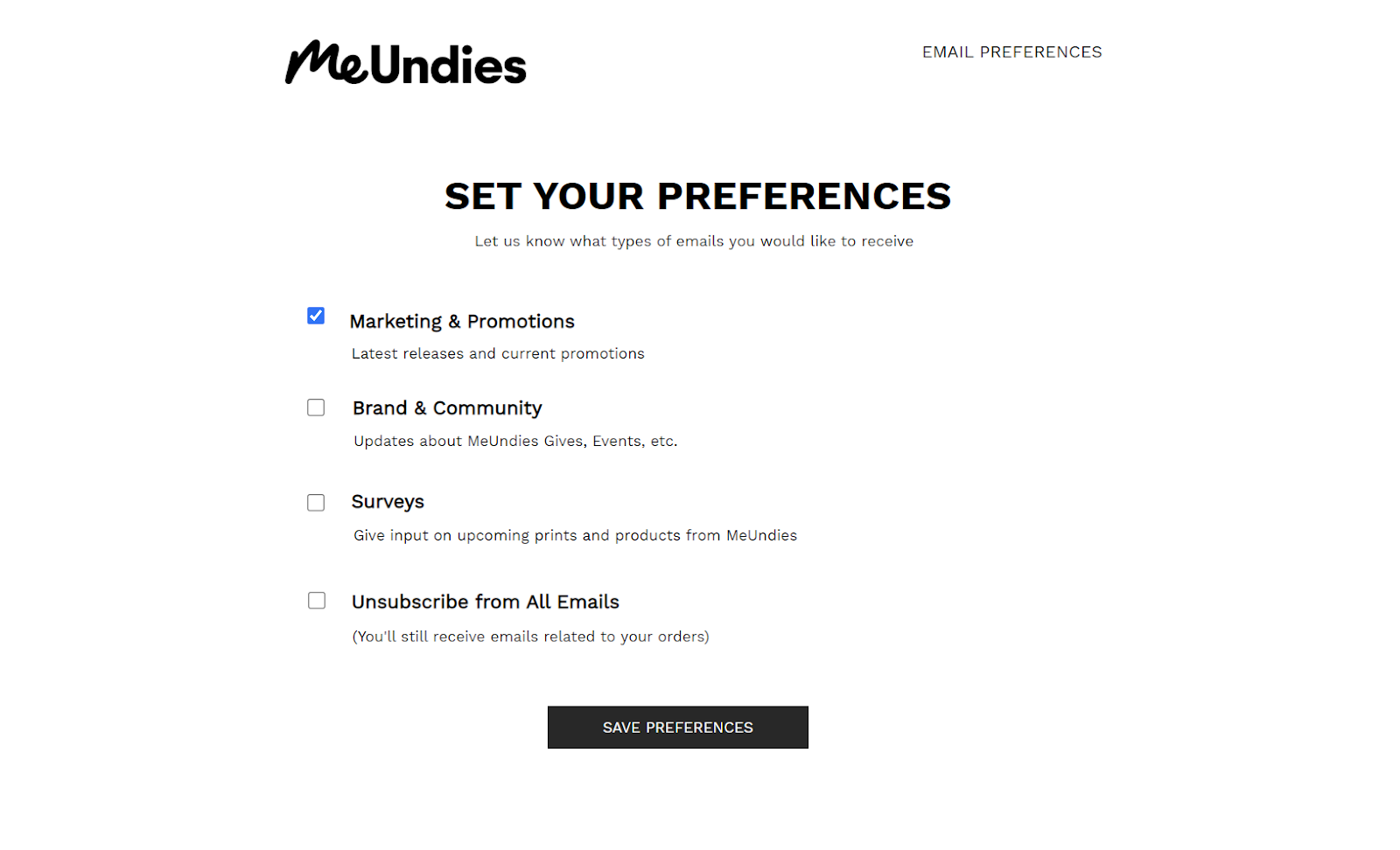
Screenshot provided by the author
3. Spotify – Customization based on listening behavior
Spotify gathers ZPD through features like "Spotify Wrapped". Here, users share their listening history. This not only helps personalize recommendations. But, it also fuels engaging marketing campaigns that keep users coming back.

Screenshot provided by the author
4. HubSpot – Personalized content through gated resources
HubSpot collects zero-party data by offering valuable resources, such as e-books, whitepapers, and webinars, in exchange for user preferences. When visitors sign up to access this content, they share details about their industry, business challenges, and interests.
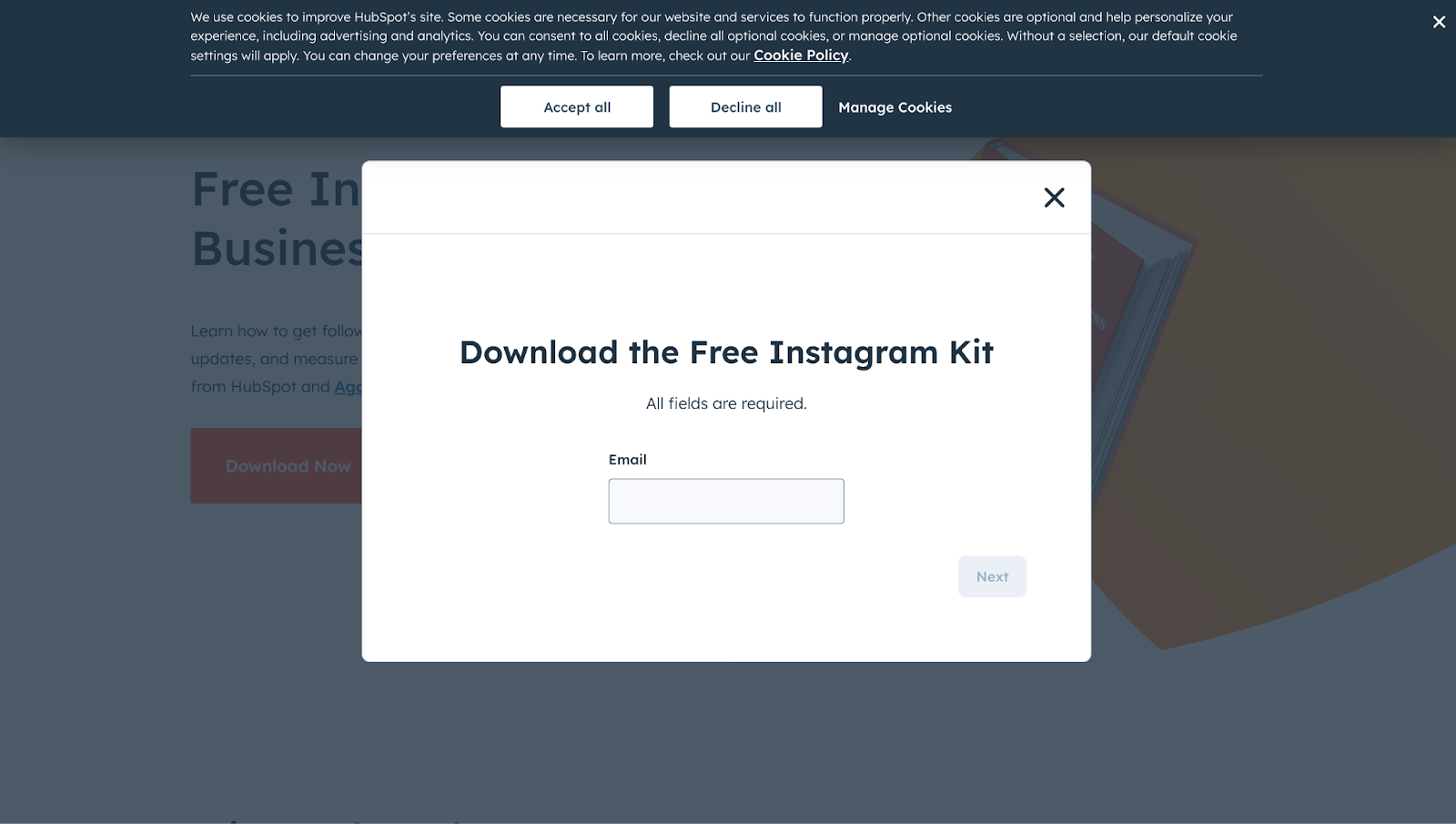
HubSpot then uses this data to:
- Personalize follow-ups
- Recommend relevant content
- Nurture leads through tailored email workflows
This approach ensures users receive information that aligns with their needs . It also increases engagement and conversion rates.
Overcoming challenges in zero-party data collection
Let’s be real, getting users to share their data willingly is no easy feat. Between privacy concerns and the risk of collecting inaccurate information, businesses have their work cut out for them. But fear not. With the right strategies, you can turn these challenges into opportunities.
Ensuring data accuracy and quality
If you want zero-party data to work for you, it has to be clean, accurate, and actionable.
Here is how to keep it that way:
- Keep questions clear and specific – Vague or overly broad questions lead to vague answers. Instead of asking, “What do you like?” try, “Which of these features would improve your experience?” The more precise you are, the better the data.
- Use real-time validation – Ever typed your email wrong on a form and only realized it after hitting submit? Frustrating, right? Real-time validation catches these errors early, ensuring that phone numbers, email addresses, and other critical inputs are accurate from the start.
- Regularly review and clean your data – Just because data is fresh today doesn’t mean it stays relevant forever. Make it a habit to check for outdated or inconsistent information, removing duplicates and refining entries as needed.
Addressing privacy concerns and compliance
With GDPR, CCPA, and other data protection laws tightening the screws on data collection, businesses cannot afford to cut corners. Transparency and trust-building are non-negotiable. Privacy laws are evolving, and staying compliant is not a one-and-done deal.
Regularly review regulations and update your policies to ensure you are always following best practices. Implement comprehensive data processing agreements (DPAs) with any third-party vendors who handle your zero-party data to ensure they maintain the same level of protection and compliance your customers expect from your brand.
Here is how to stay on the right side of privacy laws:
- Get clear consent before collecting data – No one likes sneaky data collection. Always ask for permission. This could be through checkboxes, opt-ins, or consent banners. Make it evident that users are in control.
- Explain how you will use data in plain language – If your privacy policy sounds like a legal textbook, people will either ignore it or assume the worst. Use simple terms like “We use this data to personalize your experience and never sell it.” Implement formal data contracts between your organization and customers. These should clearly document how collected information will be used, stored, and protected, establishing mutual accountability and trust in your data relationship.
- Stay compliant with GDPR, CCPA, and other regulations – Privacy laws are evolving. Staying compliant is not a one-time deal. So, review regulations on a regular basis.
Parting thoughts
The data landscape is shifting fast. First-party data has its limitations. And, zero-party data is emerging as the key to deeper customer connections. Businesses that embrace it now will stay ahead.
Why zero-party data matters:
- Unmatched accuracy – Customers provide the information themselves, ensuring its high reliability.
- Built on trust and consent – Users control what they share, fostering transparency.
- Deeper insights – Goes beyond demographics to reveal real preferences and buying habits.
- Hyper-personalization – Enables tailored experiences that boost engagement.
- Regulation-ready – Ensures compliance with evolving privacy laws.
Zero-party data isn’t just a trend—it’s the future. LeadGen App’s interactive forms make it easy to collect high-quality data. You can deliver personalized experiences and build lasting customer relationships.


